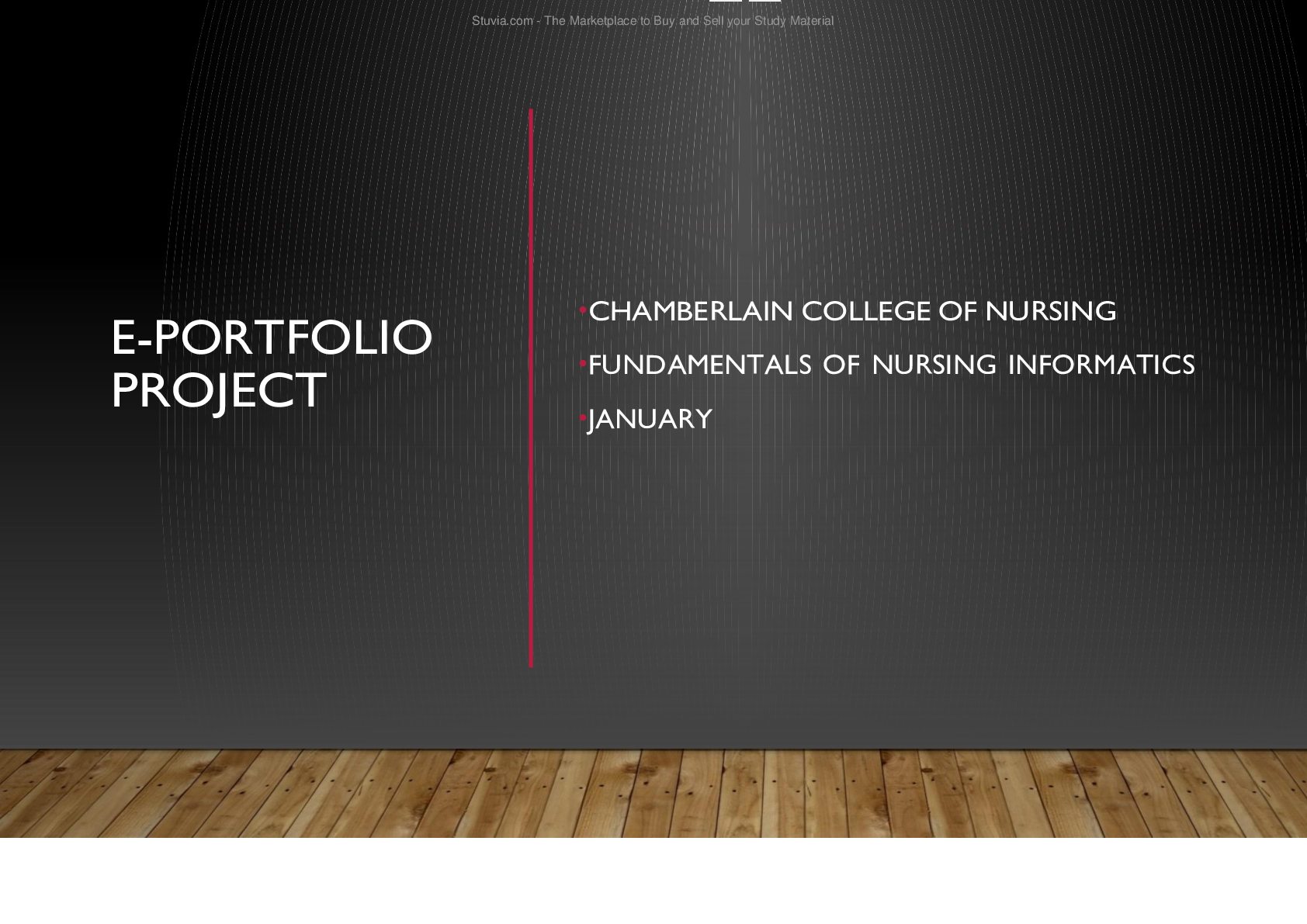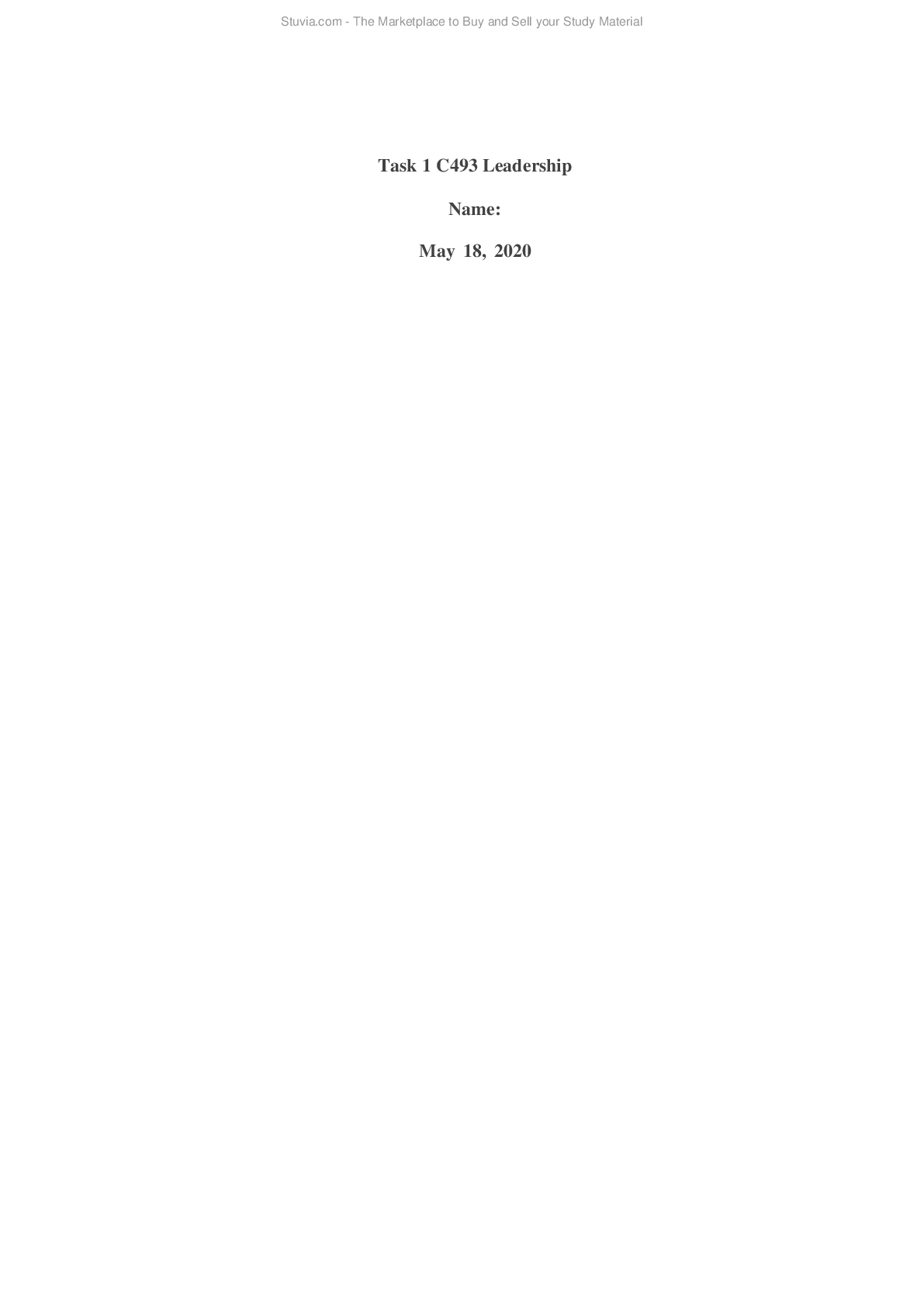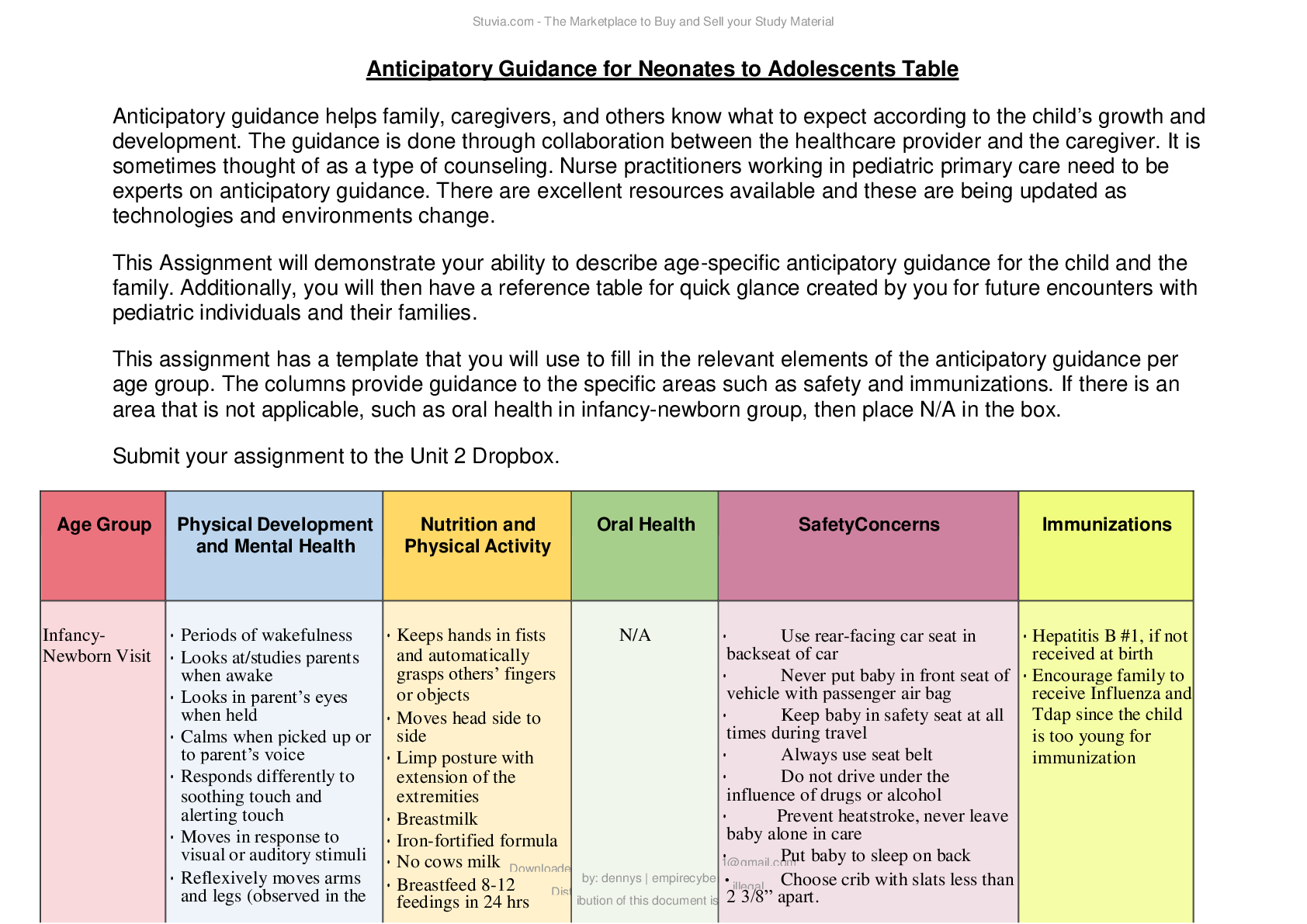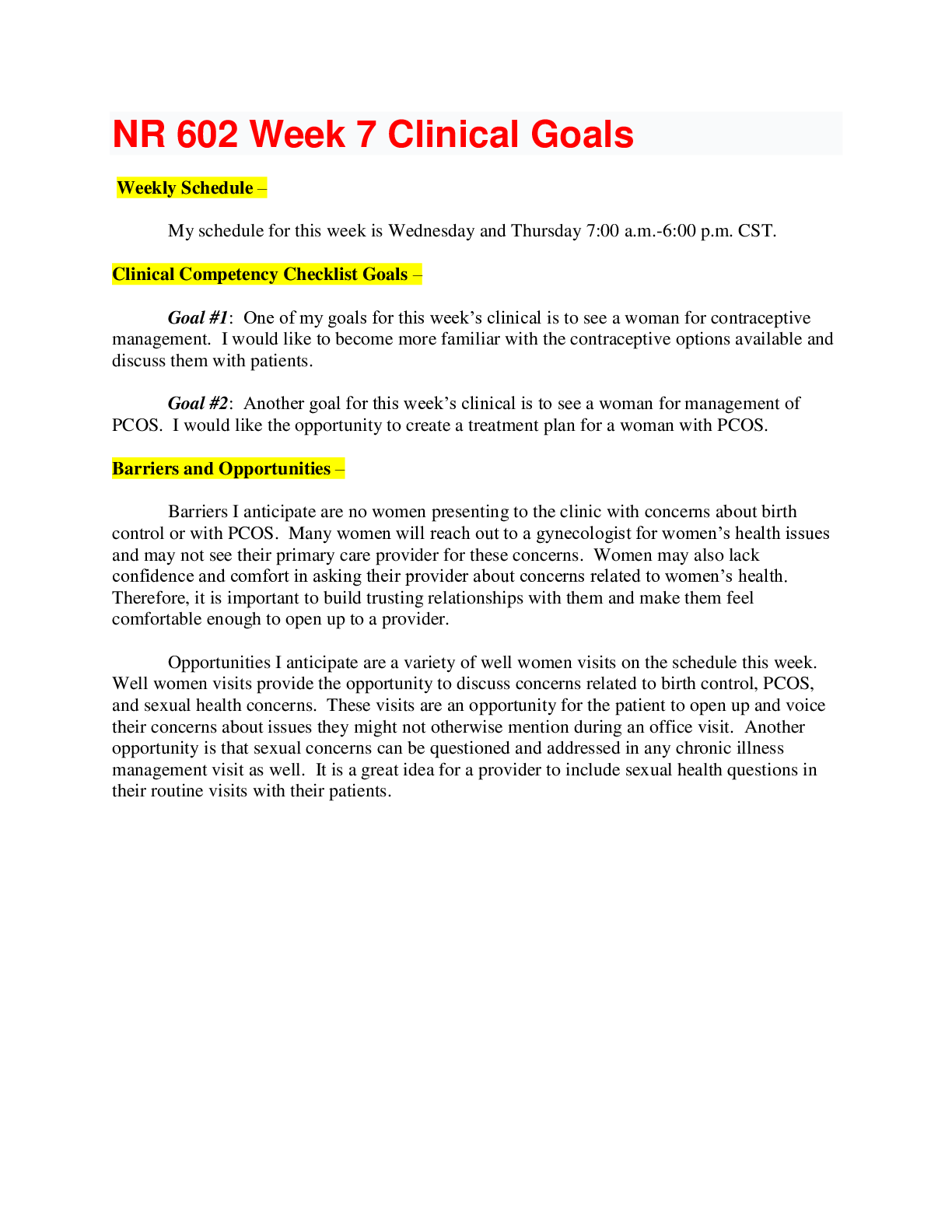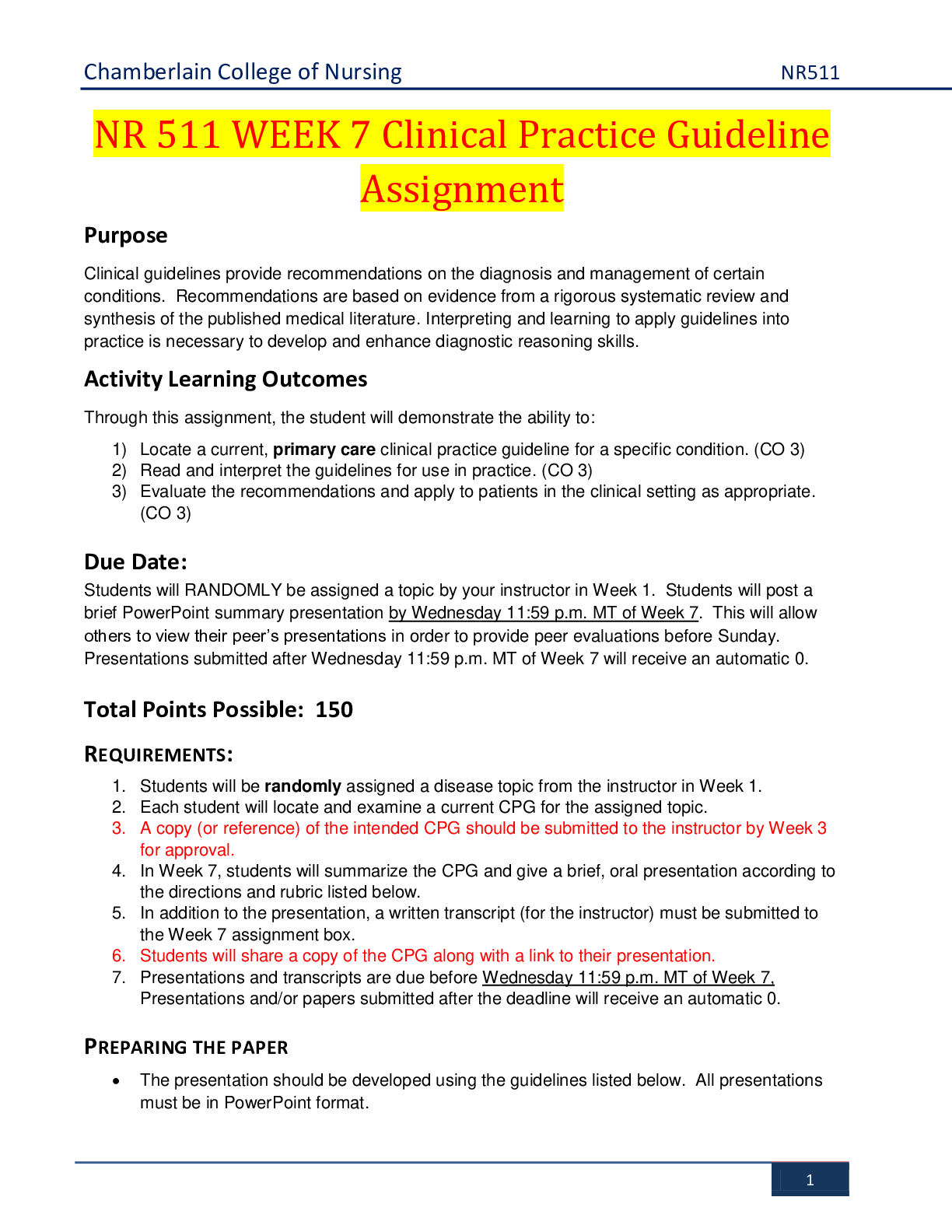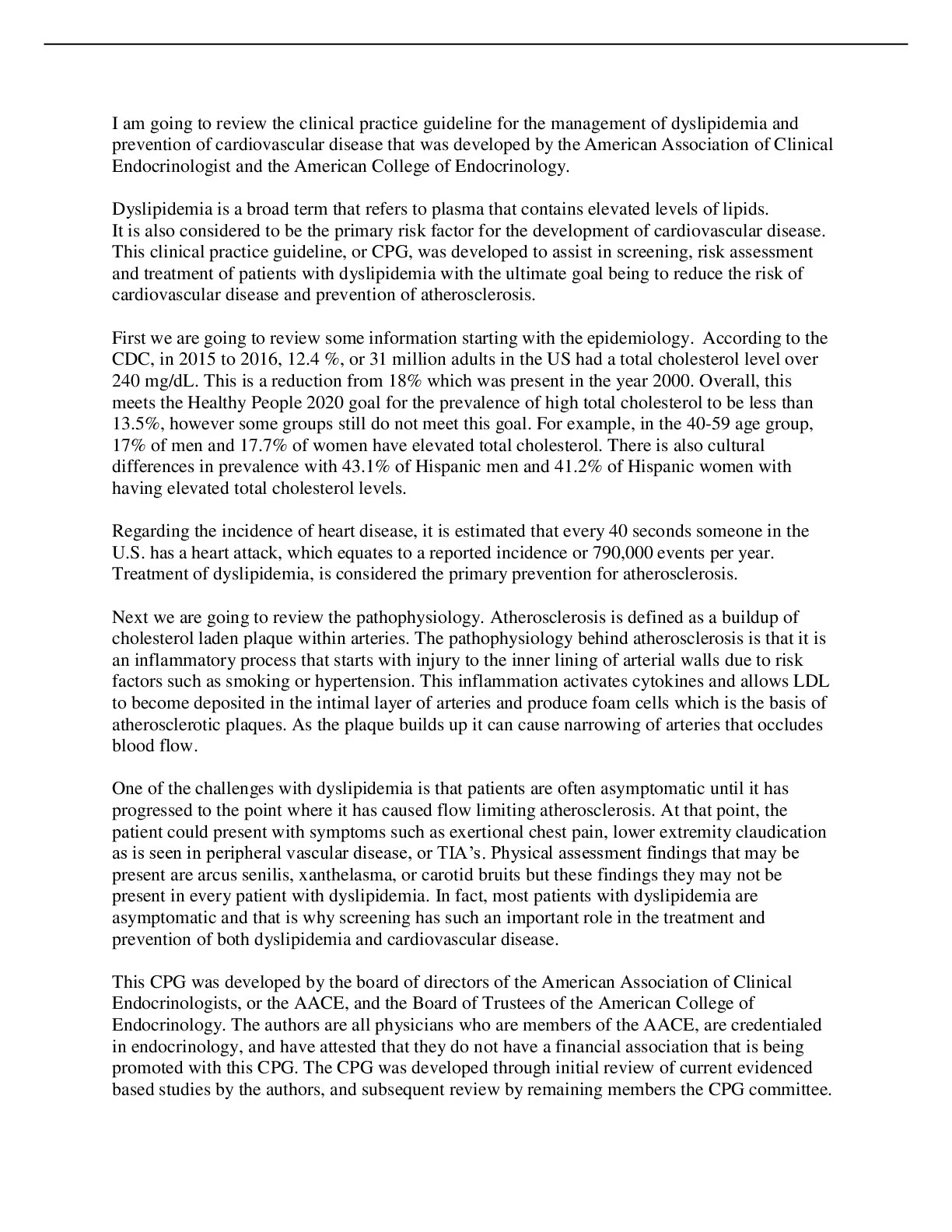> STUDY GUIDE > NR 511 WEEK 7 CLINICAL PRACTICE GUIDELINE PRESENTATION, DYSLIPIDEMIA (All)
NR 511 WEEK 7 CLINICAL PRACTICE GUIDELINE PRESENTATION, DYSLIPIDEMIA
Document Content and Description Below
with dyslipidemia are asymptomatic and that is why screening has such an important role in the treatment and prevention of both dyslipidemia and cardiovascular disease. This CPG was developed by th... e board of directors of the American Association of Clinical Endocrinologists, or the AACE, and the Board of Trustees of the American College of Endocrinology. The authors are all physicians who are members of the AACE, are credentialed in endocrinology, and have attested that they do not have a financial association that is being promoted with this CPG. The CPG was developed through initial review of current evidenced based studies by the authors, and subsequent review by remaining members the CPG committee. After the CPG was written, it was also reviewed by clinical experts and submitted for peer review before final publication. The initial AACE task force was created to create guidelines for the treatment of dyslipidemia was initiated in 1999. This task force published the first clinical practice guideline in 2000 and was revised in 2012, and has been revised a second time to reach its current form which was published in 2017. This CPG was written with the intent to be used not only by endocrinologists, but all healthcare professionals to reduce cardiovascular risks associated with dyslipidemia. This is a valuable tool for primary care as approximately 20% of all outpatient visits are associated with a diagnosis of hyperlipidemia. Primary and secondary prevention of dyslipidemia in primary care can have a significant impact on heart disease, which is the leading cause of death in the United States. This CPG is very comprehensive and contains 87 recommendations to address a wide range of patients, with each being graded on the care of dyslipidemia to prevent coronary artery disease. In this CPG, two grading scales were applied to each recommendation. The first is a 4 level scale addressing the recommendation grade with an A grade meaning there is a strong recommendation, down to a Level D which is given when there is no conclusive evidence or only expert opinion available. The second scale is also a 4 level scale that addresses that best evidence level, or BEL, based on the quality or level of supporting evidence for the recommendation. With this scale, a BEL of one is the highest rating, which indicates a strong level of supporting evidence, and a BEL of 4 indicates no supporting evidence is available. Each recommendation in this CPG was given both a Recommendation Grade and a Best Evidence Level. For this presentation, only 5 recommendations that were applicable to a sample patient seen in the primary care will be presented. First lets discuss who should be screened for dyslipidemia. This CPG recommends that men between the ages of 20 to 45 should be evaluated every 5 years. This information can then be applied to their 10 year risk of atherosclerotic heart disease which we will talk about more about in an upcoming slide. The evidence grading for this recommendation is Grade [Show More]
Last updated: 1 year ago
Preview 1 out of 5 pages
Instant download
.png)
Buy this document to get the full access instantly
Instant Download Access after purchase
Add to cartInstant download
Reviews( 0 )
Document information
Connected school, study & course
About the document
Uploaded On
Apr 17, 2021
Number of pages
5
Written in
Additional information
This document has been written for:
Uploaded
Apr 17, 2021
Downloads
0
Views
36



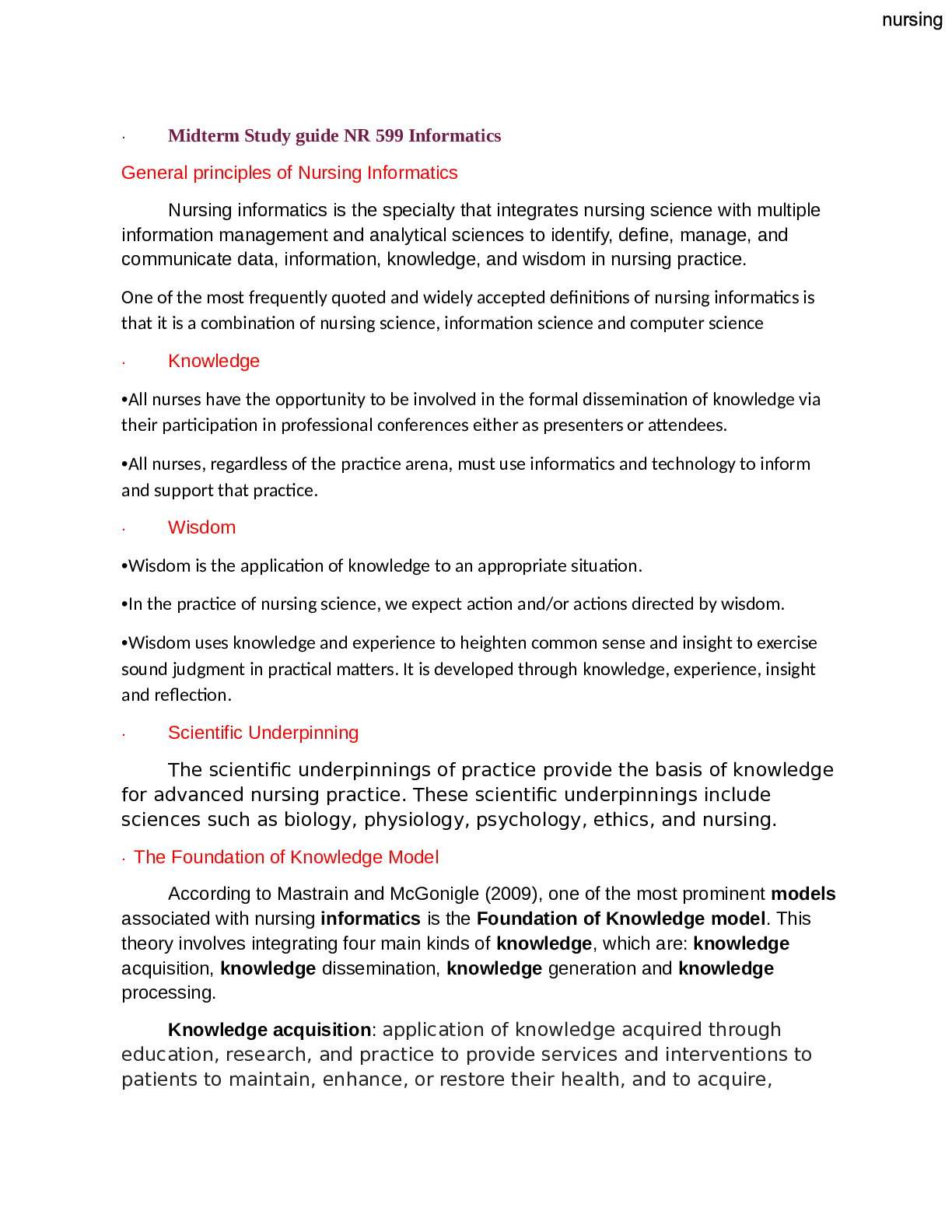

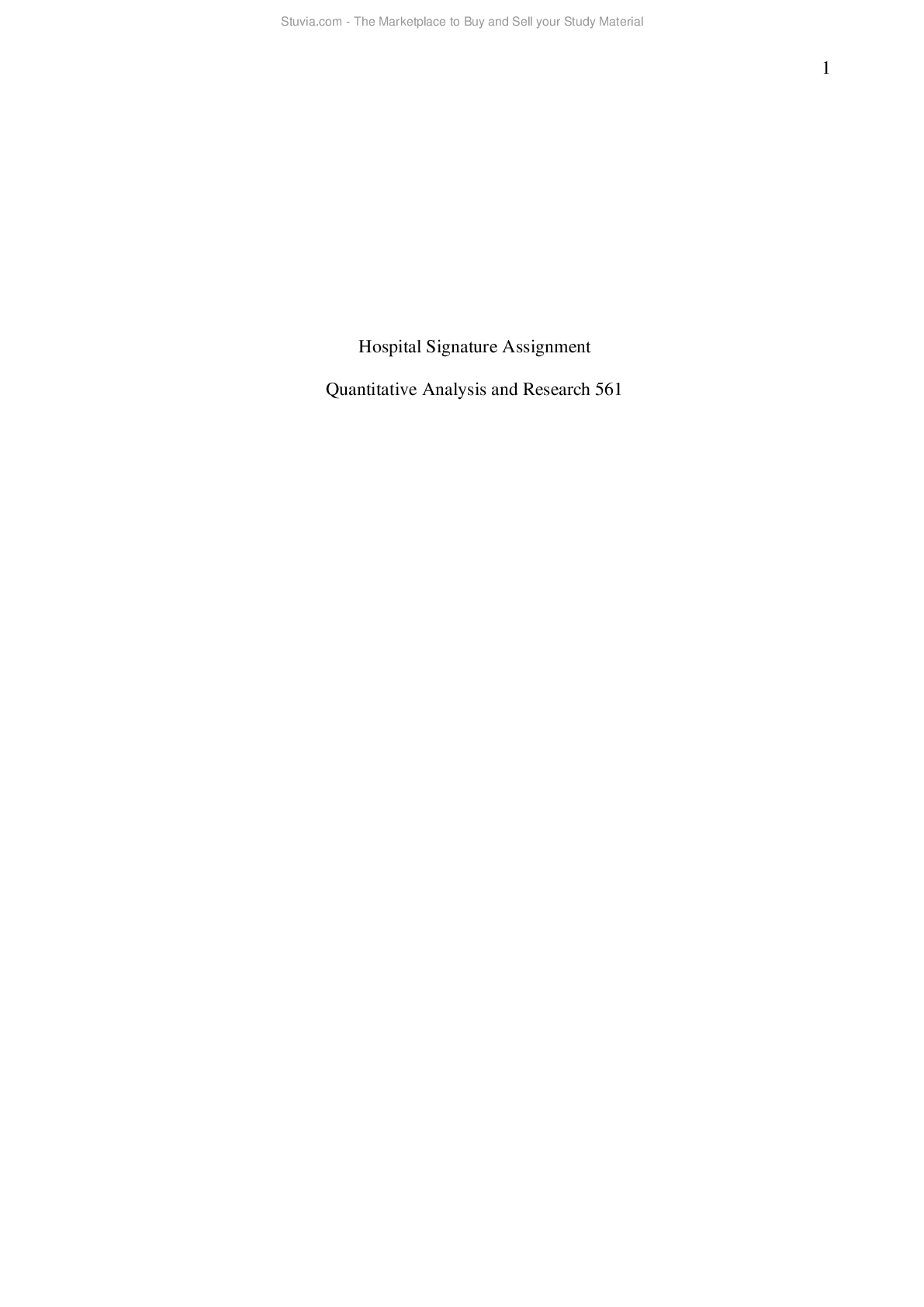
_removed.png)

